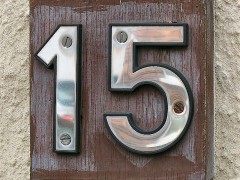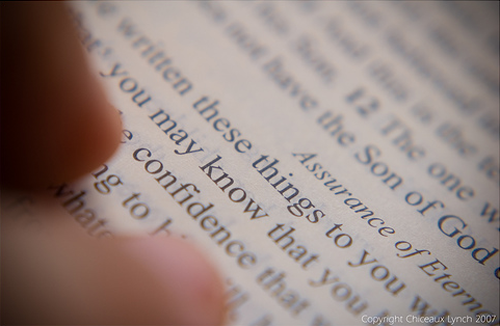
Search engine optimization or SEO for short is the process of optimizing the websites for better ranking and relevancy in search results. SEO is critical to the very existence of your online identity in form of portfolio sites or as the provider of photo-related services over the internet. SEO gives you an opportunity to attract potential customers and get projects online. (Learn more about Search Engine Optimization here.)
SEO may sound a bit scary and technical, but done correctly it helps in optimizing the website for the services offered by you and thus driving traffic to your website. One of the most important pillars of SEO is the keywords. The optimization of the website depends heavily on the keywords. Keywords are the words which best describe your website in light of search string or query used by the users to search for your website. For instance, if you are a photographer, photography and photographer are the keywords for your website. The keywords bridge the gap between what user is searching for and what he gets in the search results. And is therefore crucial to the optimization of the websites.
-
Choose The Right Keywords
Choosing the right keywords is like pitching your areas of expertise. As a photographer you may be engaged in a number of activities and to promote yourself and the services offered by you online you have to be precise. For instance if your are a wedding or portrait photographer located in New York, the keywords New York Wedding photographer or New York Photographer will work well for you and if your are more into photo printing services, the keywords will change accordingly. Target the keywords which best describe your profession as a photographer; depending on the location and services offered by you. Make the list of keywords for which you want to rank higher in the SERPs (Search Engine Results Page).
-
Place The Keywords Meticulously
The search engine bots give more weight-age to the keywords enclosed within specific HTML tags. That is why the placement of keywords matters. Place the keywords in the following order of importance to give your site a higher ranking in the search results.
- URL Naming: The domain name or the URL of the site speaks the purpose and intent of the website. Thus including the keywords in the domain name, gives a fair idea to search bot about the website, which helps in better indexing and ranking of the website. For example
toms-photography.comis more relevant thantoms-website.comfor a photography related search. - Title: Title is crucial to the identity of the web-page to search bots as well as the visitors and is perhaps the most SEO critical element on a webpage. It is thus important to make it keyword rich and relevant.
- Headings: Headings serves the purpose for organizing and breaking the content into meaningful paragraphs and enclosing the keywords within <h1>, <h2> and <h3> tags weigh more as compared to the usage of keywords in the paragraphs.
- The ‘alt’ Tag: The photography website includes a lot of images and images are not indexed by the search bots. So the best way to index the images is to mention the name of the image or keywords associated with the image in the alt tag. The alt tag finds its application in describing the image (till the graphics load and is read as an image for text browsers). Also use a relevant title tag and descriptive captions for images.
- Meta-Description: Meta-description is the text description of the website in the search results and provides information about the webpage. Provide concise and precise description of what the web-page or the website is about in your meta description tag..
- URL Naming: The domain name or the URL of the site speaks the purpose and intent of the website. Thus including the keywords in the domain name, gives a fair idea to search bot about the website, which helps in better indexing and ranking of the website. For example
-
Aim For A Higher Keyword Density
Keyword density is the percentage of times a keyword or phrase appears on a web page compared to the total number of words on the page. The higher the keyword density of the webpage, higher is the relevance of the page wrt to the given keyword.
-
Keyword Stuffing Acts As Negative SEO
Keywords play an important role in on-page SEO. But stuffing in too many keywords can be troublesome and you may be penalized by the search engine for the same. Also it will look unnatural to the readers and they may steer away.
-
Avoid Flash
The search engines cannot recognize or index the images. That is to say that the search engine bots cannot parse the alt and title tags for images included in the flash content, thus affecting the SEO of the webpage.
-
Establish A Blog
Along with marketing and publicizing your services through the website, integrating the blog helps you in establishing the authority as the professional photographer. The photography blog provides you the platform for sharing your knowledge and thus populating the webpages with the target keywords. A regularly updated blog is also given a higher preference by the search engines assuming that the information will be fresh, latest and most relevant.
-
Descriptive Filename For Images
The filename gives the search engine bots clue about the subject matter of the image. Thus naming the image ‘beautiful-landscape.jpg’ is more informative than ‘img-20.jpg’ and thus a better option for the image to be indexed with greater relevance.
-
Embedding The EXIF Data
Some search engines are also able to read the EXIF data (the meta data of the image) which allows you to include the the tags and description of the image. Thus having a relevant image description in the EXIF data will get you more relevance in SERPs (search engine result pages).
-
Anchor Text In Links
Anchor text is the text used for linking to the other web-pages or websites. The anchor text describes to the search bot what the link is about. Thus the search engines are able to relate and rank the webpage better.
-
Use The Right CMS/ Theme
When it comes to SEO, the choice of CMS and the theme or template system can make it or break it. A thoughtfully designed CMS like WordPress is a must. In addition to that you must go in for a professional theme or template to make the most of it. For this you can hire a professional web designer or WordPress developer. Not only will you be able to tap the full potential of the CMS, you’ll realize that it’s the small things that make the difference — especially when it comes to search engine optimization.
-
Off Page SEO Tip: Get External Links
External links help the search engines to find your website. The inbound links from the higher ranking websites helps you in getting a better page rank. The simple thing to do to get the links to your website or web-pages is to list your website to website directories. You can also use social bookmarking websites in this respect. Social bookmarking sites allow you to introduce your website to others with the intent of gaining valuable back-link.
-
Allow Social Media Sharing / Promoting Of Content
The business grows as the word spreads. Embedding the social media icons in form of Facebook Like (Recommend, Send), Twitter Tweets, Digg, StumbleUpon, etc. gives an opportunity to your clients and visitors to spread the word by sharing what they like on your website. The social sharing initiates the process of link-building, thus inviting valuable external links.
-
Guest Posting
Let more people know about you and your work. While you can publicize your works through your blog, guest posting also offers you an opportunity to further grow your client base. Create content for popular photography blogs and benefit from the valuable inbound links to your website.
-
Commenting
Just like guest posting, posting the comments to provide valuable piece of advice, tips or perhaps linking the relevant content of your website showers the benefits of link-building.
-
Participate In Forums
Participating in the photography forums engage you in sharing your expertise and links with the budding photographers. Having a link to your site in your signatures will get you some valuable external links and even some good traffic.
What do you do to optimize your photography site for search engines?




Thanks. This is helpful to some extent. Maybe the next article can be on the technical side of HOW to do all this. I get what needs to be done….but an alt tag? What the heck is that and how do I make one? Etc, etc.
Thanks for these useful tips :) choosing good keywords and invest some time in keyword work is surely a wise thing to do :)